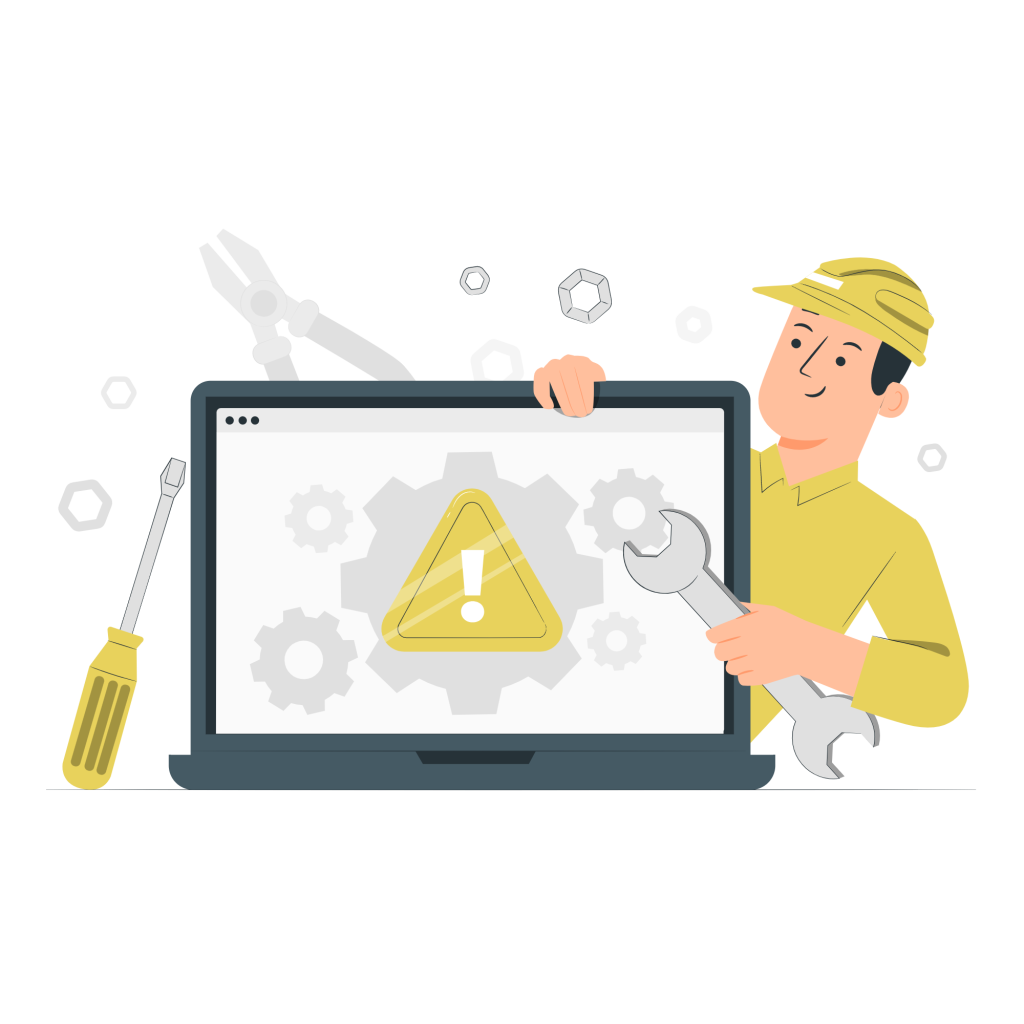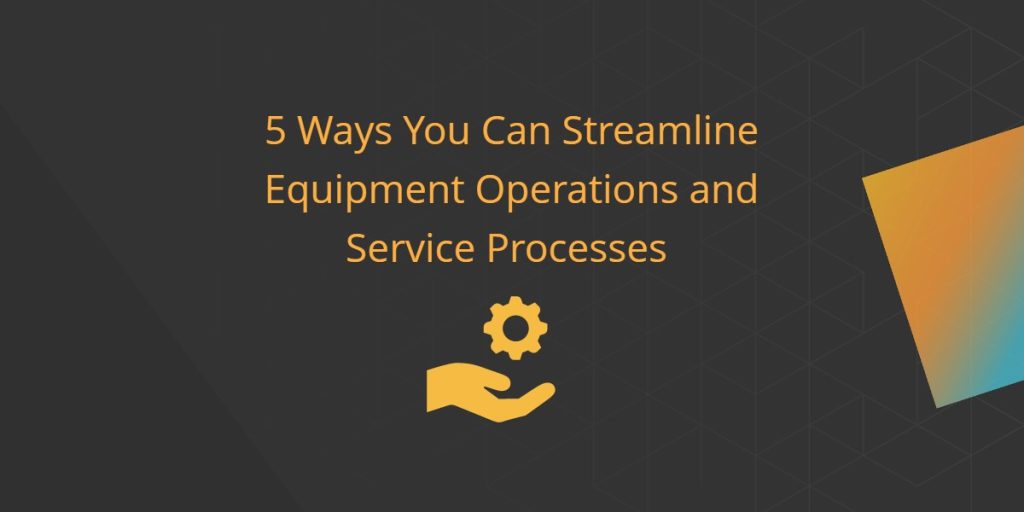A well-developed database is the core of smooth business operations. Without accurate records and complete information, it’s not possible to take actions to better manage assets.
According to a recent report, the market for maintenance management software is likely to grow at a CAGR of 8.41% by 2028, increasing the need for organizations around the globe to adopt efficient Computerized Maintenance Management Software (CMMS). The software helps reduce costs significantly, considering that newer, cloud-based technology helps minimize equipment downtime and ensure that they always remain in the best shape. Maintenance management software helps expedite several maintenance processes, such as tracking, scheduling, servicing time and more, centralizing asset information and facilitating maintenance operations
Globally, the use of maintenance management systems is growing tremendously due to its advanced capabilities for managing key business assets easily. Businesses benefit greatly from having control over their assets, through prolonged asset lifespans and optimized usage and costs. Without a modern CMMS system, there are many challenges to overcome in executing smooth, consistent maintenance processes. Let’s look at a few.
What are the challenges associated with executing maintenance programs?
- Inefficient manual processes: Implementing maintenance routines can be time and resource-intensive. There are also operational risks that arise from unscheduled or poorly planned maintenance. Manually handling all assets’ maintenance slows down the process and makes it difficult to optimize the use of assets that need to be maintained. It is easy to lose track of which assets have been sent for maintenance and which are next in queue, resulting in the potential neglect of maintenance for some assets. Manual processes also increase the likelihood of errors – as an example, forgetting to attach a checklist for repair or recording incorrect depreciation data.
- Budgetary issues: Spending on regular maintenance is sometimes problematic due to the considerable monetary investment and dedicated resources required. Maintenance operations require considerable investment in acquiring relevant inventory, such as spare parts, that are used to perform each repair procedure. Asset-intensive businesses may allocate a significant part of their budget to reactive maintenance, which leaves little to carry out preventive maintenance which is important to prevent any possible damages or halts in prodcution. Sometimes, low budget can also result in the adoption of unsafe maintenance practices, including the use of lower quality material for repairs, under-experienced technicians and temporary repairs – all of these cost-effects impact the overall usability of assets and damages business reputation.
- Inadequate maintenance strategy: Sometimes, businesses fail to develop a set of processes that must be followed to maintain healthy maintenance practices. Particular maintenance strategies for different scenarios are critical to mitigate the risk of halted production and negative productivity impact. If an asset failure is not handled properly and effectively through standard procedures, then costs can elevate unnecessarily and assets will not be maintained for peak performance, further degrading overall productivity. These maintenance strategies include:
- Corrective Maintenance
- Predictive and Preventive Maintenance
- Risk-Based Maintenance
- Condition-Based Maintenance
Strategies help streamline workflows and give direction to your standard maintenance practices, reducing management overhead and ensuring success across a wide range of contingencies. Strategizing also saves costs and time, and without them maintenance is likely to be disorganized and ineffective. Therefore, devising and implementing a strategy can be considered the cornerstone of efficient maintenance operations.

How does maintenance management software help overcome operational challenges?
Having clear maintenance management routines is highly beneficial toward the success of your business. Replacing assets is time consuming, difficult, and requires substantial investment. As every business aims to optimize spending and make the best use of their financial resources, there is a clear need to employ an efficient maintenance management tool – to facilitate your maintenance strategy, expedite equipment operations, and get the most value from your equipment and other key assets. Here’s how your organization can benefit from maintenance management software:
1. Data centralization for timely audits
Having consolidated records for all of your equipment is the first step toward ensuring that you have all the information necessary for maintaining your equipment, such as its procurement date, useful life years, depreciation and more. This helps greatly in analyzing the equipment’s condition and initiating service in a timely fashion. With consolidated data, you have all required information in one place, making it easy for you to access the data you need.
This also makes the process of maintenance audits efficient and much more accurate. Through regular audits you will be able to know where each asset is located and in whose custody, as well as which assets are already in maintenance and which ones require special attention. Audits also help in deciding maintenance routines for certain assets and therefore help prevent potential equipment failure. A maintenance management software ensures quality equipment performance during audits, and helps make more informed decisions. By doing so, you can also avoid over and under maintenance and keep the equipment running optimally.
2. Smooth work order management
With the help of work orders in maintenance management software, you can manage repair and maintenance of your equipment directly. Simply creating a work order can initiate a request for maintenance or repair, including all the information needed, such as attaching a detailed checklist to be followed at the time of repair. You can describe the materials that will be needed for the repair and service to be performed so that the technician knows what exactly is required for use, saving time and effort.
Work order management can be efficiently executed leveraging the more advanced features of a maintenance management software. It allows you to create work orders of different types – for example, if a piece of equipment is being serviced before use, its status will be marked as in “preventive maintenance.” You can also assign the appropriate technician to the work order so that the process is done under the correct supervision and all the highlighted steps are followed. Work order management both saves time and allows you to closely track your maintenance and repair processes. You can cross-check the checklist attached to the work order with the actual task performed so that any discrepancies can be recorded and corrected. The ability to add relevant information to generate work orders saves you from making mistakes when sending equipment for maintenance and ensures that each asset receives the care it needs.
3. Efficient inventory management
Maintenance operations are greatly dependent upon efficient inventory management. First, without proper inventory management, you are at risk of adding cost due to errors in scheduling raw materials delivery, resulting in stock shortfalls and unnecessary delays. An important component of inventory includes spare parts, and losing sight of them can be chaotic. At times, it can be difficult to track down a particular spare part because it is lost amongst other inventory in the warehouse, which delays maintenance. With maintenance management software, you can know the exact location of all spare parts and also verify their respective custodians so that they are always available when needed, or procured on time when stock is running low.
Effective parts management is essential to ensure maintenance productivity and efficiency. Proper management of maintenance and repair inventory helps save 10-30% of the budget invested in inventory. Also, employing the right kind of inventory management strategy, such as “just in time,” also streamlines service processes by expediting inventory deliveries and therefore availability. Spare parts must always be available in case your equipment experiences breakdowns., and unexpected equipment breakdown can greatly increase costs for your business. With improved and automated inventory management, you can always stay current with your inventory numbers, ensuring that you are never over or under-stocked; this also saves you from the extra effort required to physically check if an asset is available. You can also track your inventory’s purchase order history to ensure its availability and stay within the defined budget.

4. Track financial KPIs
How often have you been unable to analyze your total investments in assets and track your maintenance performance over time? Maintenance Key Performance Indicators (KPIs) are lifesavers in such scenarios, as they make it easier for you to achieve your maintenance goals and strategically analyze how well you are controlling maintenance costs over time. For example, if management wants to understand the mean time for approvers to respond to a maintenance request, in order to improve efficiency, they can see a maintenance KPI for that. Some of the common operational KPIs to track maintenance-based performance are:
- Mean Time to Respond
- Maintenance Cost
- Unplanned Work Orders %
- Mean Time to Start
Every business has benchmarks for financial performance and tracking daily activities is an important step toward achieving those benchmarks. Likewise, a certain budget is allocated to managing inventory and financial KPIs help streamline the monitoring of your spending. These financial KPIs also help you develop better control over your daily operations, as they give you a holistic view of whether your small targets are being met to achieve your end goals. Maintenance KPIs communicate how well your maintenance operations are being performed, and allow your organization to set more attainable maintenance goals for the future. They enable you to more clearly recognize areas that need improvement so that you can quickly take corrective measures.
5. Speedy maintenance and service alerts
It is important for all stakeholders to receive important updates and automated alerts help ensure that. Real-time alerts allow users to know about any actions taken that concerns them. Maintenance management software allows you to customize alerts by having specific settings for people at different organizational levels, eliminating the need for emails. In this way, staff users and administrators are notified promptly about important maintenance updates. For example, if a piece of equipment is reserved for maintenance or service, then the associated users will be notified of the action, allowing them to prepare ahead of time for any adjustment to operations in the absence of the equipment.
Also, users can set alerts in the maintenance management system which notify about actions that are directly related to their workflows. So, everytime an important maintenance action is taken, such as a new maintenance request is made, they know how and when to respond. This helps improve overall response time to requests. Also, you develop better visibility into your operations and can identify quickly if particular areas need attention. You will be notified throughout the stages of a workflow which expedites maintenance management. With alerts, the relevant stakeholders are able to instantly respond to a service request, reducing the time it takes to move onto the next stage of the process.
6. Automated reports for efficiency
Data analysis is a critical part of the maintenance process. Maintenance managers can achieve more accurate results and gain holistic, data-driven insights using maintenance management software reports. Reports are an efficient way to carry out in-depth analysis of data, such as maintenance statistics, such as a cost analysis – how much has been spent on maintaining the equipment in a certain month or year. Further, you might want to generate a list of assets that are currently in a preventive maintenance cycle – you can create a report for that in a single click. In-depth reporting makes it easy to leverage data for your important operational decisions and future planning.
Graphs are an essential component of analysis to provide insight to managers and develop better communication across the organization. These graphs help illustrate clear representations of significant, aggregate information. Large volumes of data can be interpreted this way and incorporated into the reports helping all stakeholders better understand all performance gains and relevant issues to be addressed. You can also run comparisons between assets to see which items have required more attention over time. With this information consolidated as graphs in your reports, you can observe key maintenance trends for more actionable analysis and carry out better informed management.
How does maintenance management software improve your productivity?
Business progress and productivity are dependent on how well its internal operations are being handled, including maintenance processes. Well-maintained equipment not only boosts your overall performance but helps achieve targets in a timely manner. A maintenance management system coupled with good maintenance strategies can save you considerable cost and time. Having an integrated and centralized platform for maintenance-related tasks allows greater accessibility, better reporting, and seamless tracking.
You can carry out several functions from a single source of truth, rather than having separate systems for a variety of actions. With a maintenance management system, you can improve equipment operations considerably and smoothly execute maintenance processes, thereby reducing delays, controlling costs, and increasing your organization’s overall productivity.

About EZO CMMS
EZO CMMS is the next generation maintenance management software. It does more than just simple maintenance, it empowers your teams with a central command center to assign and complete work orders to achieve optimal productivity. We offer a free 15-day trial – no credit card required!








